Caramelized Onion & Marrow Spread
I’ve been making an effort to live with less clutter. Like most people, I’m sure I own more things – clothes, documents, random objects – than I need. Coming to Glasgow with probably less than half the stuff I have back home, made me realize that there are only a few objects I can’t live without. I’ve also been trying to keep things simple in the kitchen, even though this is a big challenge for me because I’m not the kind of cook who intuitively works with only a few ingredients per recipe. I love layering flavours and textures on top of each other, and that’s how I naturally cook most of the time. That probably also explains why I’ve always been more drawn to middle-eastern and southeast asian cuisines (lots of things going on, flavour and texture-wise) than mediterranean (simple – but killer – ingredient combinations).
The recipe I’m sharing with you today, although only requiring a few ingredients, has an amazing complex flavour that results from the long cooking time. Just like in this recipe, the onion and marrow flavours and textures are pushed to the limit, and the outcome couldn’t be better. I know that some of you will probably be put off by the idea of peeling and chopping several onions, grating and squeezing the marrow, and waiting more than one hour for the dish to be ready. And since we’re at it, I must advise you there really are no shortcuts here – the vegetables have to brown and caramelize slowly, or there won’t be the same kind of flavour development. But if you think about it thoroughly, most of the cooking time is inactive and, in the end, you’ll end up with an amazing vegetable “jam” that is versatile and tasty enough to be used as a pasta sauce, served on top of cooked lentils, spread on toast and, my personal favourite, used as a filling for chickpea crêpes.
Caramelized Onion and Marrow Spread
(serves 6, as a starter)
Note: As an effort to eat less salt, I’ve been using Lo Salt lately. You can definitely use sea salt in this recipe, but adjust the amount (you’ll probably only need ½ or ¾ teaspoon of it).
Recipe inspired by food52
4 large onions, peeled, cut into half-moons and thinly sliced
6 Tablespoons olive oil, divided
2 Tablespoons water
1 large marrow
1 ½ teaspoons lo salt (see note above)
½ teaspoon freshly cracked black pepper
Heat 4 tablespoons of oil in a large pan over medium heat. When the oil is hot, but not smoking, add the sliced onions. Give the mixture a good stir, so that the onion slices are evenly coated with the oil. Leave undisturbed for 10-15 minutes, so that the onion slices in the bottom of the pan crisp up and brown slightly. After that time, stir the mixture again and reduce the heat to low. Cook for additional 45 minutes. Stir every 20 minutes and add 1 tablespoon of water each time (2 in total), to release some caramelized bits that might have stuck to the bottom of the pan.
In the meantime, grate the marrow into a large bowl. Transfer the grated marrow to a colander and squeeze it with the back of a spoon (or using your hands) to release as much water as possible. Set aside until the onions are cooked.
As soon as the onions have caramelized, add the marrow, low salt, pepper and additional 2 tablespoons of olive oil to the pan. Cook, stirring often, for additional 30 to 40 minutes, or until the marrow has reduced significantly and the mixture has a jam-y kind of texture. The spread can be kept, stored in a airtight container in the fridge, for up to 1 week.
White Bean & Mushroom Stew with Thyme
People often ask me how long it takes me to make a blog post. The short answer is: it depends. Some dishes take longer to prepare than others. Some foods look naturally good (like fruits and vegetables), while others need a little help (and time) to look appetizing (such as beans or tempeh, for instance). Sometimes, I know straight away what I want to do when it comes to photograph the dishes I prepare – I kind of have the pictures I want to take in mind –; other times, I have no clue of what I’m going to do.
Having said all this, I think stews such as the one I’m sharing with you today are the hardest meals to photograph. I love this kind of food, but stews in general look like an indiscernible (but incredibly tasty) mess of ingredients and are usually brown-ish in colour. This particular one demanded a lot of work. I cooked and shoot the recipe in the morning, but then, in the early afternoon, I looked at the images and wasn’t pleased. I ended up starting all over again, only to get images that I’m just relatively happy with.
But when it comes to how the dish tastes though, that’s a whole different story. I actually make this kind of mushroom and bean stew very often because of how easy, quick and tasty it is. The addition of brewer’s yeast (you could use nutritional yeast instead) gives it complexity and complements the mushrooms’ earthy flavour beautifully. You don’t have to stick to the varieties I used here – shiitakes or the regular white button mushrooms work well too.
White Bean & Mushroom Stew with Thyme
serves 3, as a main
1 Tablespoon olive oil
1 large / 180 g onion, thinly sliced
4 garlic cloves, minced
300 g baby Portobello mushrooms, sliced
285 g pleurothus mushrooms, roughly chopped
6 thyme sprigs
255 g / 1 ½ cups cooked white beans
310 ml / 1 ¼ cups water
2 Tablespoons brewer’s yeast
2 Tablespoons lemon juice
3 Tablespoons tomato puree
½ teaspoon salt
2 teaspoons cassava starch (or corn starch)
Heat the oil in a large skillet over medium heat. Add the onion and garlic and cook until the onion is soft (about 5 minutes). Add the mushrooms and thyme sprigs and cook, stirring often, for additional 10 minutes, or until the mushrooms shrink considerably.
In a medium sized bowl, combine the water, brewer’s yeast, lemon juice and tomato puree. In another bowl, gradually mix the cassava starch with ¼ cup of the brewer’s yeast and tomato sauce. Add the cassava mixture back to the bowl with the sauce and whisk until thoroughly combined.
Add the beans and the sauce to the skillet with the mushrooms and let it boil for 5 minutes or until the sauce thickens and reduces a bit. Remove the thyme sprigs and serve immediately with crusty bread on the side.
Green Monster Soup with Za’atar Toasted Sunflower Seeds
I love a good bowl of soup anytime of the year, but I tend to eat a lot more soup during the cold winter months. Usually people tend to think of soup as the kind of dish where they can throw in as many vegetables as they have lying around in the fridge. I tend to think the opposite actually, and like to take a “less is more” approach when it comes to soup making.
This soup in particular is made with three different greens (spinach, cabbage and turnip tops) and has sweet potatoes and a little amount of rolled oats in it to make it creamier and balance the greens’ natural bitterness. There’s also ginger for some heat, and a crunchy seed topping to keep things exciting. I usually make this soup using solely cabbage and chard, but I couldn’t find the latter this week on the market, so I just replaced it with spinach and turnip greens.
Turnip greens are very easy to find in Portugal, but my (little) travel experience tells me it’s not an ingredient that’s easily available in other parts of Europe. If you can’t find them, use chard instead. I’d just advise you against making this an all spinach soup – maybe it’s just me, but I find spinach a little bitter (specially the new Zealand variety, which is the one I’ve used here) and that’s why I like to pair it with another green partner. I want to thank all of you who visit this blog regularly and wish you a wonderful new year. I’ll be back soon. In the meantime, eat your soup! :)
Green Monster Soup with Za’atar Toasted Sunflower Seeds
serves 4
For the soup:
2 Tablespoons olive oil
230 g / 1 large thinly sliced onion
5 garlic cloves, minced
23 g fresh ginger, peeled and grated
240 g / 2 medium sweet potatoes, diced
225 g / half a medium sized cabbage, thinly sliced
25 g / ¼ cup rolled oats
5 cups water
225 grams spinach leaves
180 g turnip greens
¾ teaspoon salt
½ teaspoon freshly ground nutmeg
For the za’atar toasted sunflower seeds
55 g /1/3 cup sunflower seeds
1 teaspoon olive oil
1 teaspoon za’atar
extra olive oil, lemon juice and za’atar for serving
For the za’atar toasted sunflower seeds: In a small bowl, combine the sunflower seeds with the oil and za’atar. Transfer the seeds to a skillet over medium-high heat and toast until they’re golden and fragrant (about 5 minutes). Reserve.
For the soup: In a large pot over medium heat, add the oil, onion, garlic and ginger and cook for 10 minutes, or until the onion has softened. If the vegetables dry out during this time, add a few tablespoons of water to loosen things up.
Next add the diced sweet potatoes, cabbage, rolled oats and 5 cups of water. Bring the soup to a boil and, once boiling, decrease the heat to medium. Cover and cook for 10 minutes or until the vegetables are cooked through.
Finally add the spinach and turnip greens as well as the salt and freshly ground nutmeg. Cook for additional 5 minutes, or until the spinach and turnip greens have shrunk considerably.
Transfer the soup to the bowl of a food processor. Working in batches, puree the soup until it’s creamy and smooth. Serve with plenty of za’atar sunflower seeds on top, an extra dizzle of olive oil and a squeeze of lemon juice.
Roasted Carrot & Black Bean Salad with Orange Cinnamon Dressing
I don’t share the enthusiasm most people have for Christmas. My close family is very small and I’m with them all year around, so gathering for an occasion I personally couldn’t care less about (I respect all religions, but I’m not a religious person) just seems a bit pointless. Having said this, it doesn’t come as a surprise that I don’t bother cooking a big, impressive meal for Christmas Eve. In fact, I cook the same kind of food I do everyday, like this little carrot and black bean salad.
This dish is easy to pull off and it’s packed full of good things for you. It’s also perfect for this time of the year when, after the carb and sugar filled holidays, people seek to lighten up their eating. You can also adapt the ingredients, like substituting the black beans for chickpeas or even the carrots for sweet potatoes. The dressing is very fragrant and gives an exotic edge to the salad too. After cooking my way through Plenty More these last couple of weeks, I borrowed some ideas from Ottolenghi, and one of those is adding spices to salad dressings, like cinnamon and/or fennel seeds.
I wish you guys a wonderful new year, and I’ll come back by the end of the week with one of my favourite soup recipes –keeping the mood light and clean. ;)
Roasted Carrot & Black Bean Salad with Orange Cinnamon Dressing
serves 2
For the salad:
645 g / 10 medium sized carrots, peeled and left whole
1 teaspoon cumin seeds, crushed
1 ½ teaspoon coriander seeds, crushed
1 tablespoon olive oil
270 g / 1 ½ cups cooked black beans (canned is fine)
20 grams chopped parsley
20 grams chopped mint
20 grams chopped coriander
30 grams / ½ small red onion, finely diced
1 medium avocado, thinly sliced
salt and pepper to taste
For the orange cinnamon dressing:
zest of one large orange
3 tablespoons olive oil
2 tablespoons lemon juice
1 small garlic clove, minced
¼ teaspoon cinnamon
salt and pepper to taste
Preheat the oven to 180º. Line a baking tray with non-stick baking paper. Combine the carrots with 1 tablespoon of olive oil and the cumin and coriander seeds. Add a generous pinch of salt and pepper, toss, and roast in the oven for 45 minutes or until the carrots have cooked through and are lightly brown.
Mix the remaining ingredients for the salad in a large bowl, and add the carrots on top. Combine the ingredients for the dressing and drizzle over the salad. Serve immediately.
Lentil and Mushroom Salad with Sumac Lemon Dressing
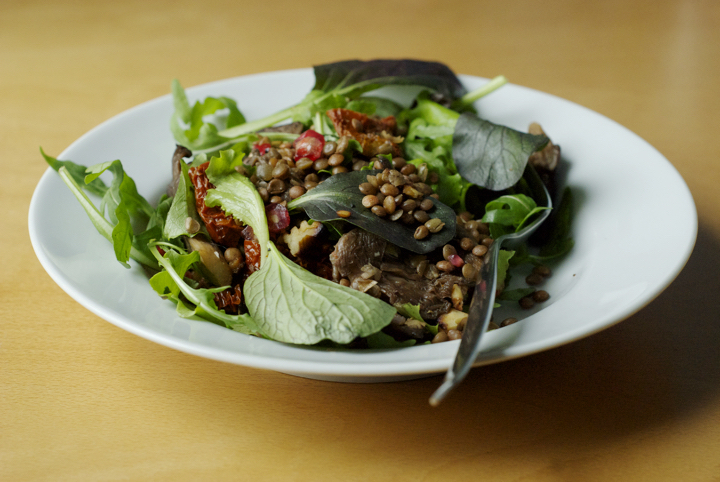 When the weather starts getting colder, I eat soups and stews for the most part of my meals. However though, salads are still welcomed, as long as they’re heartier and incorporate some cooked elements.This salad makes for a perfect, quick lunch anytime of the week. I’ve made it countless times and sometimes substitute the lentils for whole grains such as barley and bulgur and it tastes delicious as well.
When the weather starts getting colder, I eat soups and stews for the most part of my meals. However though, salads are still welcomed, as long as they’re heartier and incorporate some cooked elements.This salad makes for a perfect, quick lunch anytime of the week. I’ve made it countless times and sometimes substitute the lentils for whole grains such as barley and bulgur and it tastes delicious as well.
One thing you should pay attention to when making this dish is not to overcook the lentils. There’s nothing worse than mushy, soft lentils. To avoid this, cook them for no longer than 15 minutes and they’ll be perfect. As far as the dressing goes, sumac is it’s key component, so please don’t skimp on that. I’ve first found out about sumac one or two years ago when I decided to make my own za’atar. It’s a hard to find and reasonably pricy spice here in Portugal (although some speciality stores sell it these days), but you don’t need to use much to feel its tangy and lemon-y flavour. I hope you enjoy the salad and the start of the new season! Have a good weekend :)
Lentil and Mushroom Salad with Sumac Lemon Dressing
(serves 4, as a starter)
105 g / ½ cup brown lentils, washed, drained and picked through
1 Tbs. olive oil
2 medium garlic cloves, crushed
300 g pleurothus mushrooms
50 g / 8 halves oil packed sundried tomatoes, roughly chopped
50 gr walnuts, toasted and roughly chopped
2 big handfuls / 40 g salad leaves such as rocket, baby spinach, etc.
105 g/ ½ cup (packed) pomegranate seeds
for the sumac lemon dressing:
1 ½ tsp. sumac
3 Tbs. lemon juice
60 ml / ¼ cup olive oil
1 small garlic clove, minced
salt and pepper to taste
In a small pan over medium-high heat, add the lentils and 2 cups of water. Bring to a boil and, once boiling, reduce the heat to low-medium and cook for 14-16 minutes or until tender but still al dente. Add ½ teaspoon of salt to the lentils, stir everything, and drain. Add the lentils to a large bowl and reserve.
Heat a large skillet over medium-high heat and add 1 tablespoon of oil. Once the oil is hot, but not smoking, add the mushrooms and garlic cloves and cook for 5-8 minutes or until golden brown. Add a pinch of salt and pepper as soon as they’re cooked, remove the garlic, and add them to the bowl with the lentils.
Add the sundried tomatoes, walnuts, salad leaves and pomegranate seeds to the bowl with the lentils and mushrooms and toss everything together gently.
For the dressing, mix all the ingredients in a small glass jar. Cover the jar with the lid and agitate vigorously until everything’s combined. Pour the dressing over the salad (not all of it – 3 to 4 tablespoons should be enough) and serve immediately.
Tempeh Lemon Curry
I know I haven’t been around for a while but, hey!, I’m still here, and today we’ll talk curry. I realize this is the first curry recipe I write about on the blog, and to be honest I don’t know how that happened because it’s the kind of dish I cook often. I know there are a lot of vegetable curry recipes on the internet and that you probably don’t need another one, but I’ve made this curry countless times and think it’s a good one to have on your repertoire.
The variations in here could be endless. I’ve made it before with spinach in place of the cabbage and it turned out good, but I prefer to use the latter mainly because of the texture it brings to the whole thing. A word on tempeh: it’s well known that steaming tempeh for 15 minutes before actually cooking with it, removes its bitterness. To be honest, I don’t mind the bitterness and I think it goes practically unnoticed in here, camouflaged by the bold flavours of all the spices and the lemon. Having said this, if you want to steam it first (or even sub it for tofu), go ahead.
Enjoy the curry, have a great summer (guess what: here in Portugal has been raining) and I promise to come back soon! (:
Tempeh Lemon Curry
(serves 4)
3 Tbs. olive oil, divided
1 large onion, finely chopped
4 garlic cloves, finely chopped
1 tsp. ground coriander seeds, roughly pounded in a mortar and pestle
1 tsp. mustard seeds, roughly pounded
1 tsp. caraway seeds, roughly pounded
2 medium carrots, cut into cubes
1 Tbs. fresh ginger
1 tsp. ground turmeric
1 red chilli, finely chopped
1 large zucchini, cut into half moons
1 cup / 250 ml coconut milk
4 cups shredded cabbage
250 gr tempeh, cut into cubes
½ teaspoon
1 tsp. rice syrup
2 Tbs. mirin
zest of one lemon
1 handful toasted cashews, coarsely chopped
1 handful fresh mint, coarsely chopped
juice of ½ lemon
In a large pan over medium heat, add 2 tablespoons of olive oil, onion, garlic cloves and coriander, mustard and caraway seeds. Fry for 3-4 minutes or until the onion has softened and the spices have toasted a bit and smell fragrant.
Add the carrots, fresh ginger, turmeric, chilli and zucchini to the pan. Give everything a good stir and add the coconut milk. Cover the pan and cook for 5 minutes.
In the meantime, heat the remaining 1 tablespoon of olive oil in a frying pan over medium-high heat. When the oil is hot, but not smoking, add the tempeh cubes and fry until golden brown. Turn off the heat, sprinkle the tempeh with a pinch of salt and add it to the pan with the vegetables.
Now, add the cabbage to the pan as well, pressing it gently with the back of an wooden spoon so that it’s covered by the coconut milk. If, at this point, the curry looks as if it hasn’t enough liquid, add up to 1/3 cup of it, but keep in mind the cabbage will release a lot of water too. Cover the pan and cook for additional 5 minutes, or until the cabbage is wilted. Add the salt, rice syrup, mirin and lemon zest. Stir everything together and finish off with the lemon juice, toasted cashews and mint.
Recipe adapted from The Modern Vegetarian Kitchen, by Peter Berley, published by William Morrow Cookbooks, 2008
Black Bean and Red Pepper Burgers
If you check this blog regularly, chances are you’ve probably noticed that I have a soft spot for veggie burgers. Out of the 62 recipes posted to date in here, 6 of them consist of some sort of patties – and being honest, I think there will be a lot more to come. What I mostly like about veggie burgers is that you can play around with ingredient and flavour combinations – mixing spices, nuts, whole grains, legumes and vegetables – and end up with a protein-packed component of a dish. When paired with a salad of sorts, they make quite a satisfying meal.
This burger in particular came out of the need to clean up the fridge: there was this neglected pepper in the bottom shelf that would go bad in a matter of days, halves of onions wrapped up in parchment paper for a supposed later use, a nearly empty large jar of olives… I could go on. I strongly encourage you to give these a try as they have a contrast of flavour and texture – soft and salty olives / crunchy and nutty seeds – that really seals the deal for me.
When it comes to serve them, this time around I thought of something different from “the classic” – in between two pieces of bread – and came up with the idea of wrapping the patties in thin slices of grilled eggplant. The eggplant adds extra moisture and a distinct smoky flavour that I’m particularly fond of. In case you want to up the patties’ (already high) protein content, an open-faced “sandwich” made with grilled Portobello mushrooms – just like this one – would be an excellent choice.
Black Bean and Red Pepper Burgers
(makes 6 patties)
2 large onions / 300g / 2 cups, finely chopped
1 medium sized red bell pepper / 220g / 1 cup, finely chopped
1/2 teaspoon salt
2 large garlic cloves, finely chopped
1 teaspoon coriander seeds, lightly crushed in a mortar and pestle
1 ½ teaspoons cumin seeds, lightly crushed in a mortar and pestle
2 tablespoons olive oil
¼ teaspoon smoked paprika (1/2 teaspoon if using regular paprika)
240 g / 1 ½ cups cooked black beans, rinsed and drained
60 g / ½ cup buckwheat flakes (you can substitute with rolled oats)
55 g / 1/3 cup green olives, coarsely chopped
40 g / 1/3 cup sunflower seeds
1 big handful chopped coriander
Heat a large skillet over medium-high heat. Add the sunflower seeds and toast them for 3 to 4 minutes, or until they’re golden brown and smell fragrant.
In the same skillet you used for toasting the seeds, add the finely chopped garlic cloves, coriander and cumin seeds, smoked paprika and olive oil. Cook the spices and garlic over a medium-high flame for 1 minute.
Add the onions, pepper and salt to the skillet, give it a good stir, and turn the heat down to medium-low. Cover the skillet with a lid and let the mixture cook for about 15 minutes, or until the onion and pepper bits are soft and slightly caramelised. You should check the skillet every 5 minutes to avoid burning the mixture – if the latter seems dry, add up to 2 tablespoons of water each time you check it out.
Once the onion mixture has been cooked and cooled down, add half of it to the bowl of a food processor. Add the beans as well. Pulse a few times, or until you get a sticky but consistent paste.
Transfer the bean and onion mixture to a bowl. Add the buckwheat flakes and incorporate well using a wooden spoon. Add the chopped green olives, toasted sunflower seeds and coriander as well. Mix again. You’ll end up with a slightly moister mixture, but it should still be possible to make patties out of it. To make the job easier, wet your hands with cold water and shape the mixture into 6 burgers (or more, depending on the size you choose).
Heat 1 tablespoon of oil, over a medium flame, in a large skillet. Add the patties and cook them for 3-4 minutes on each side. Serve with your favourite condiments and fixings or as suggested above.
Ottolenghi’s Saffron Cauliflower
I’m not sure why, having already tried some recipes from Plenty, I haven’t wrote about the book in here before. Plenty is strictly vegetarian (no meat, no fish) but, on the other hand, isn’t particularly vegan-friendly (a large number of the recipes call for dairy and eggs). Anyway, that isn’t really a disavantadge, as I usually find a lot of inspiration in dishes that aren’t vegan already, as part of the fun is to actually try to veganize them – that both mental and practical exercise on how to substitute non-vegan ingredients for plant-based ones, is one of the things I enjoy the most about the process of recreating recipes.
Back to the book: it is filled with amazing dishes from cover to cover (the photography is also great, and there’s an image for every single recipe on the book too) – next on the list, is the Soba noodles with aubergine and mango, already mentioned here – but this one in particular - saffron cauliflower - not only is really tasty, but also couldn’t be simpler (and require fewer ingredients) to make.
I’ve already shared with you my love for cauliflower – one of the vegetables I like the most to work with – and with this recipe on hand, I assure you, there’s no reason why not to eat it more often. I also haven’t modified the recipe that much, so my version only includes some minor tweaks: I ommited the bay leaves the original recipe called for (actually because I forgot them on the counter and only realized that a few minutes before the cauliflower was done roasting), subbed saffron strands for the powdered version (as it was what I had on hand), and added ¾ teaspoon of sea salt. Although the book features a very slightly different version of this dish, you can find its first version online, published on The Guardian’s column the new vegetarian.For a tasty, unusual, side dish, this is it.
recipe’s here
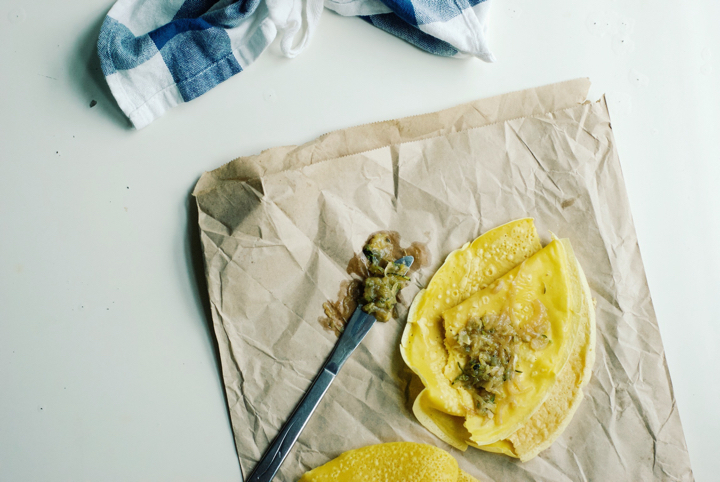
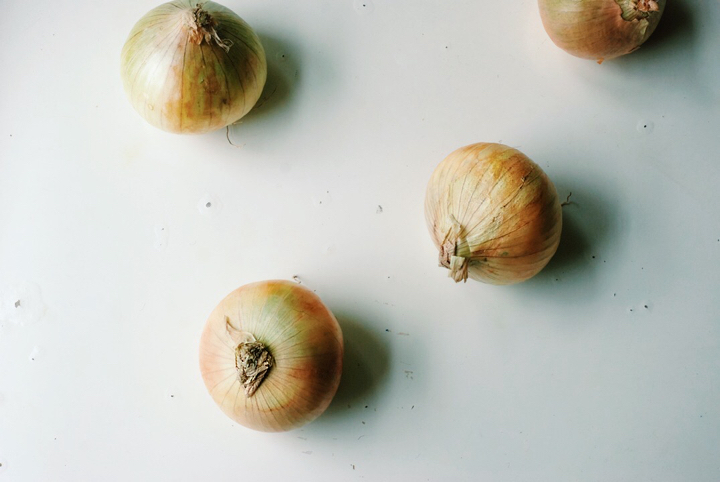
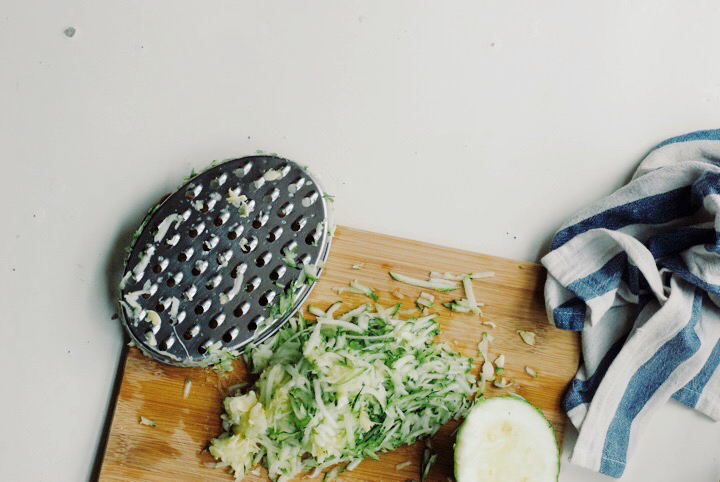
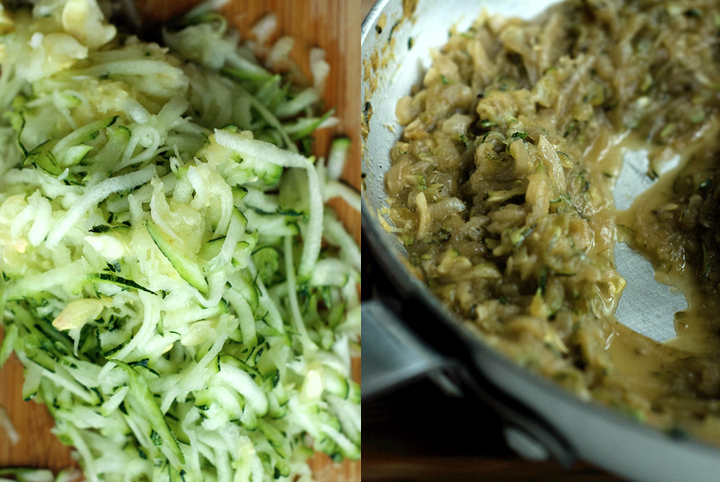
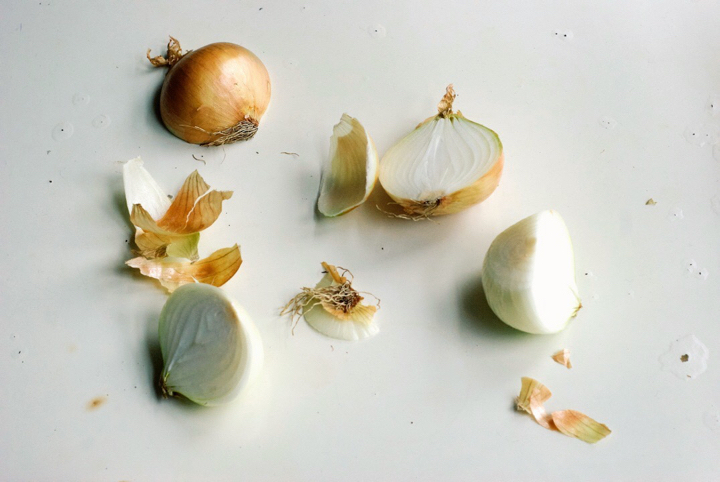
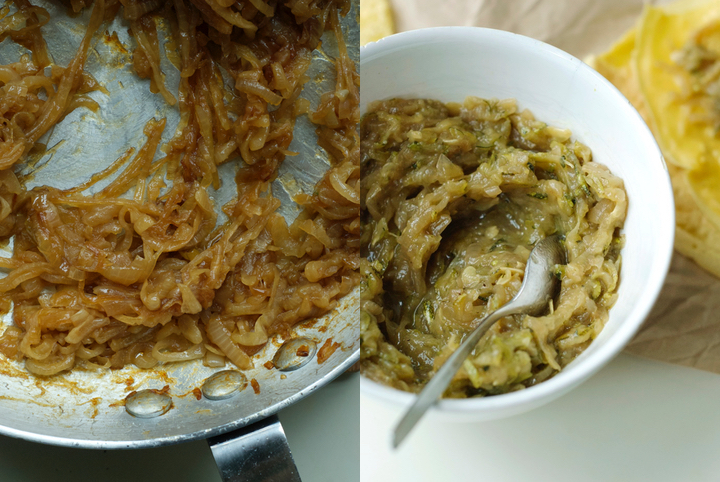
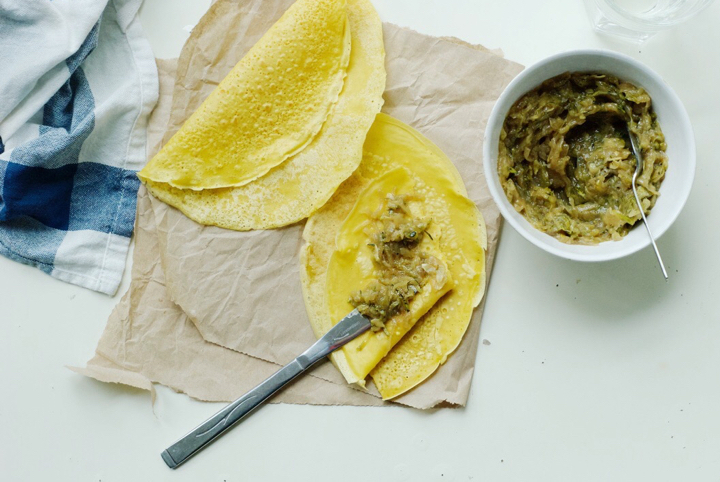
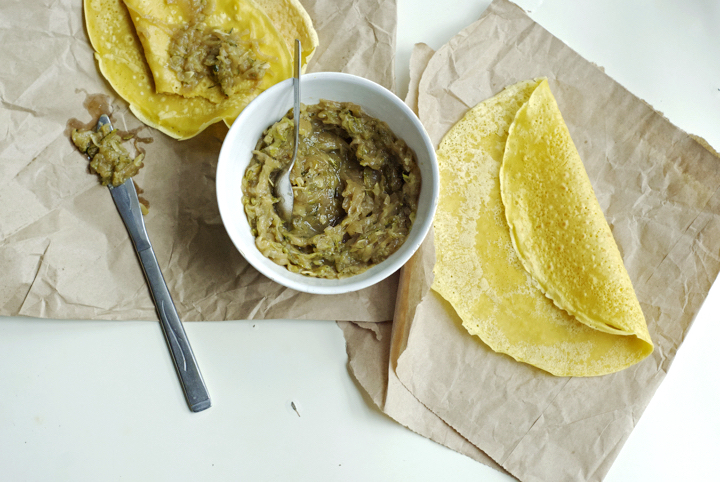
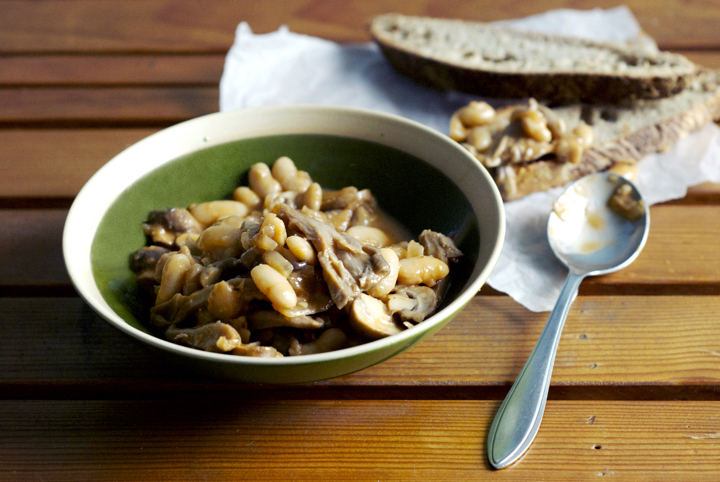
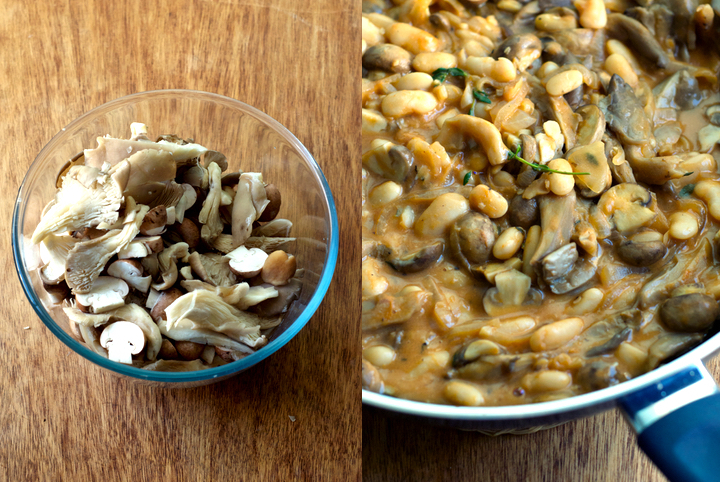
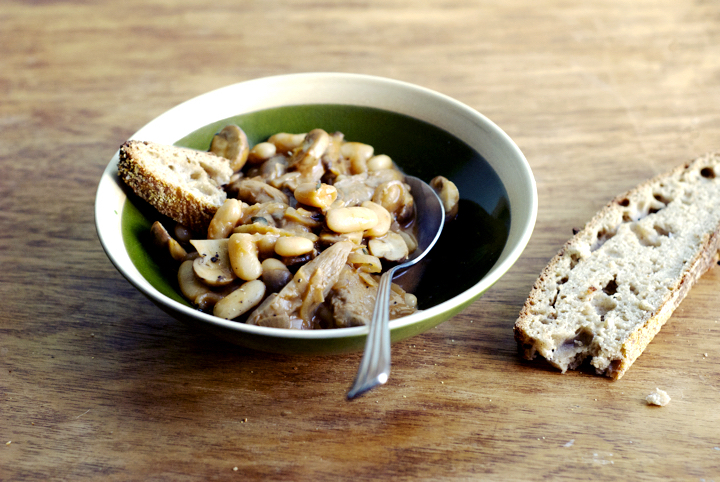
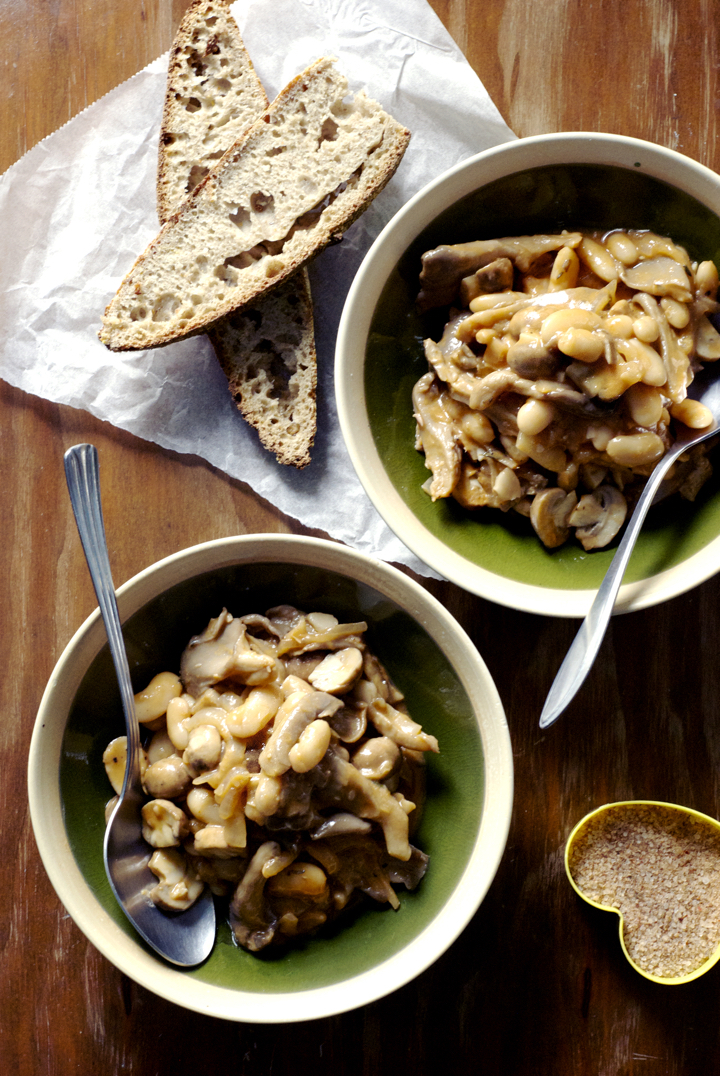
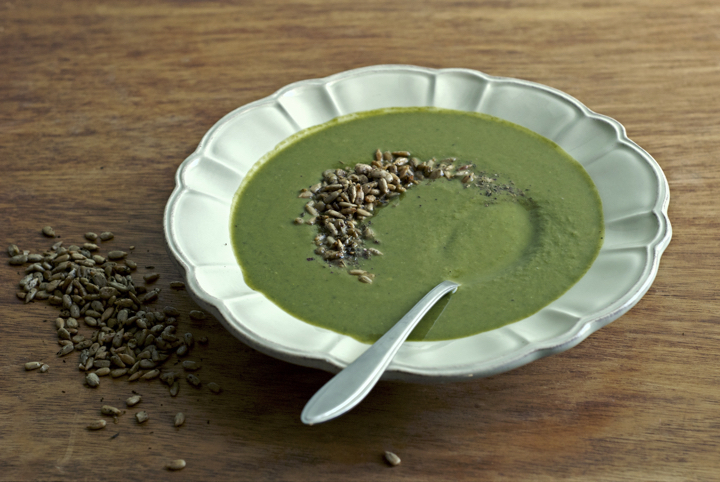
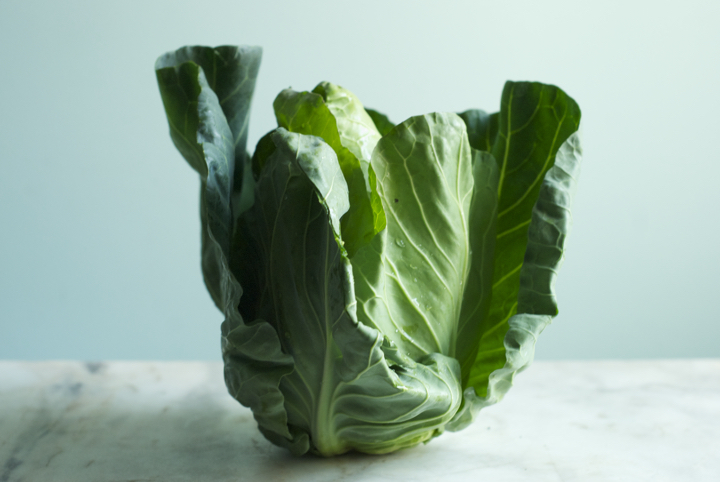
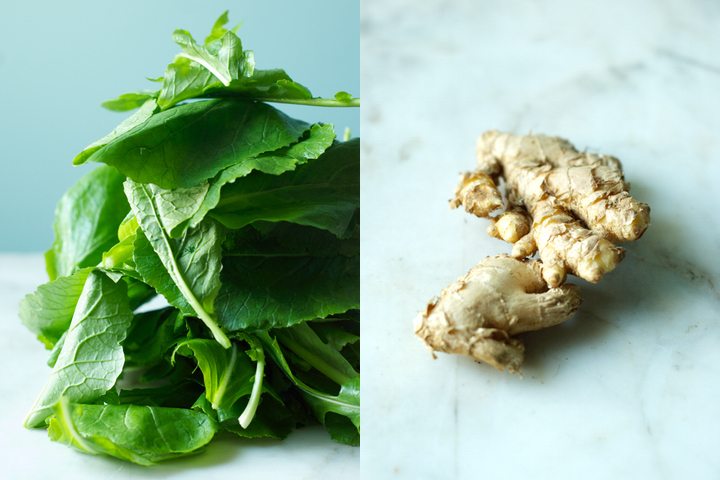
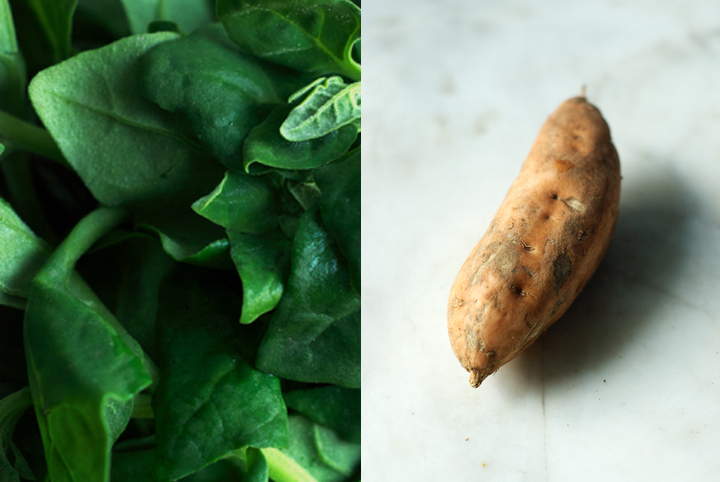
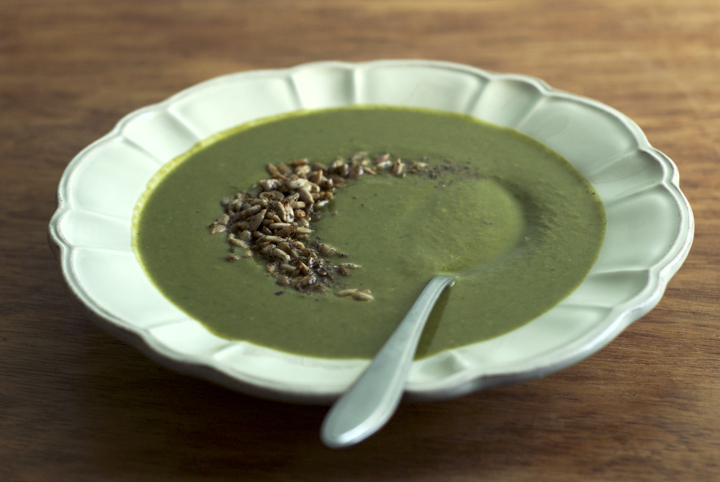
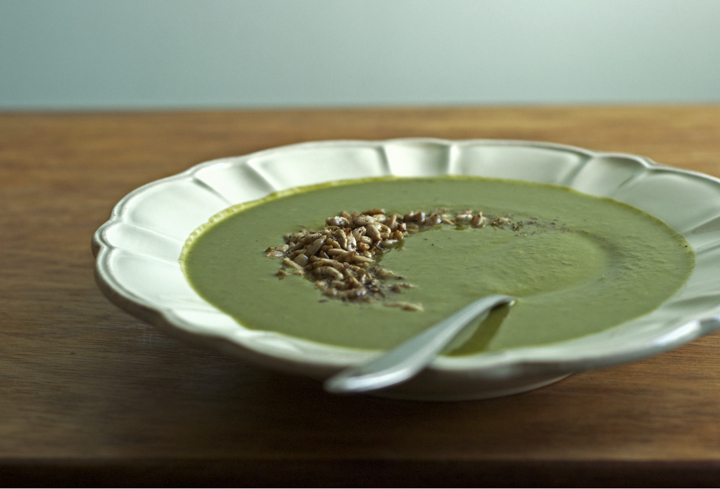

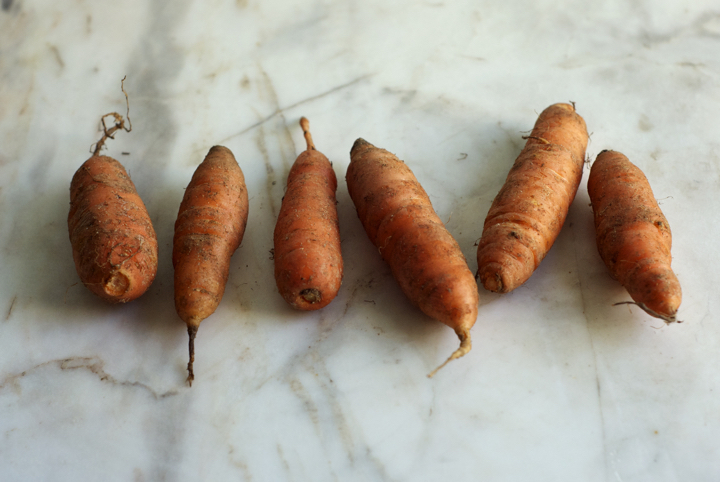

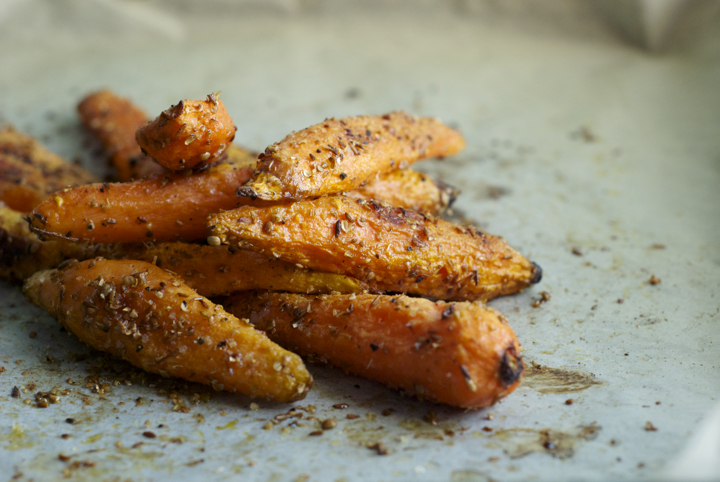
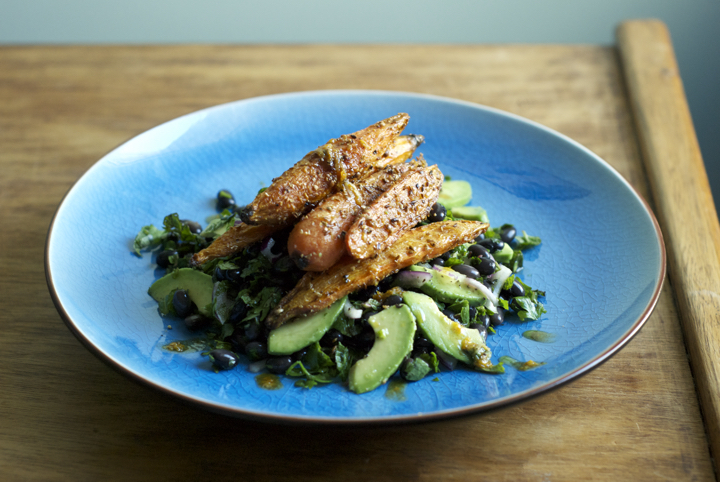
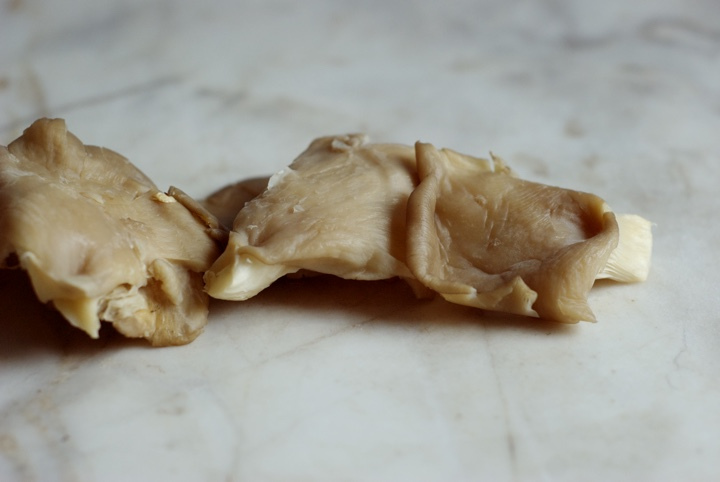
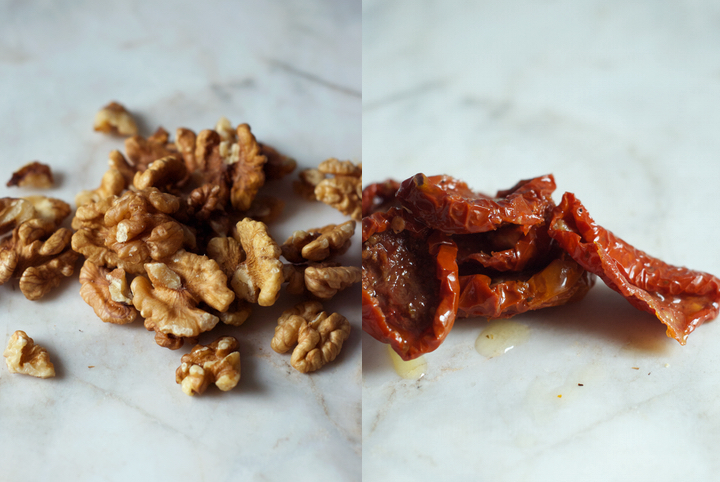
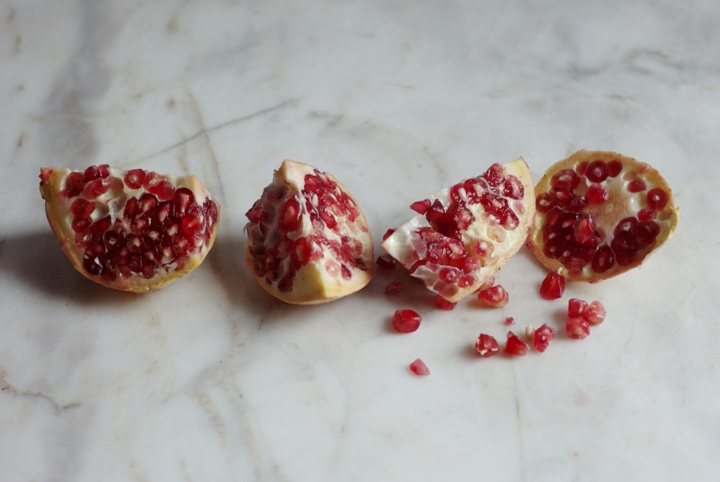
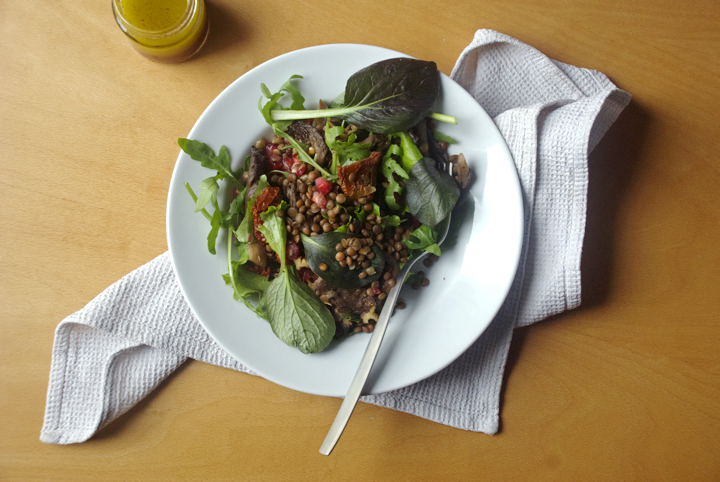
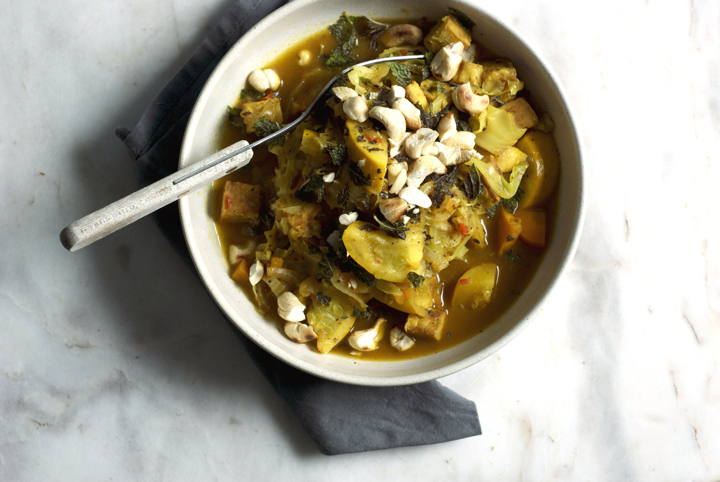
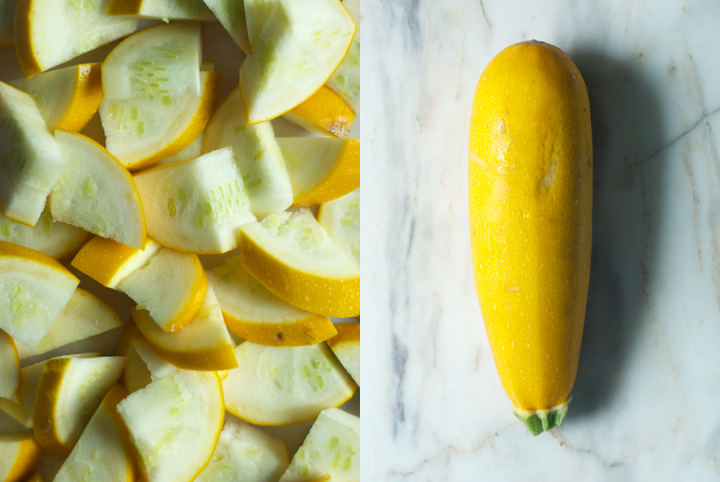
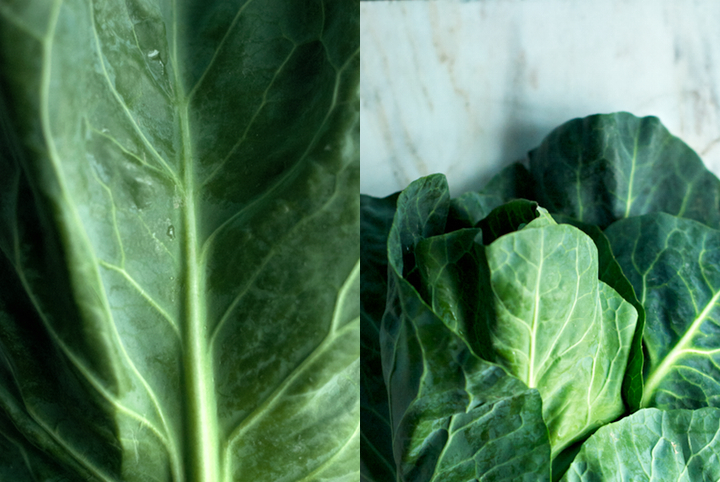
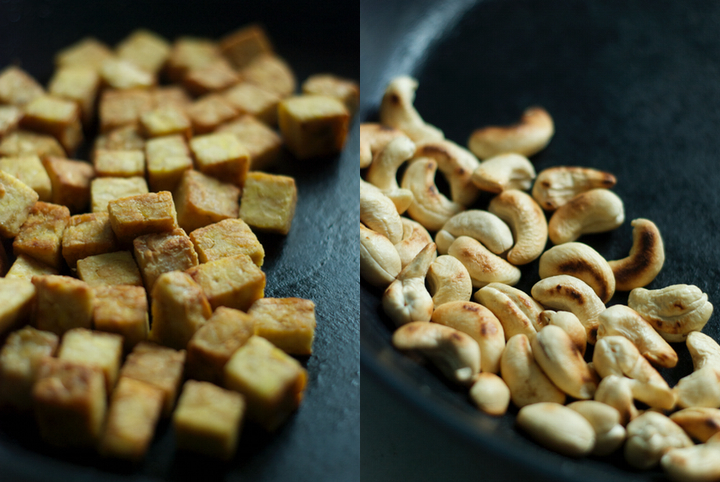
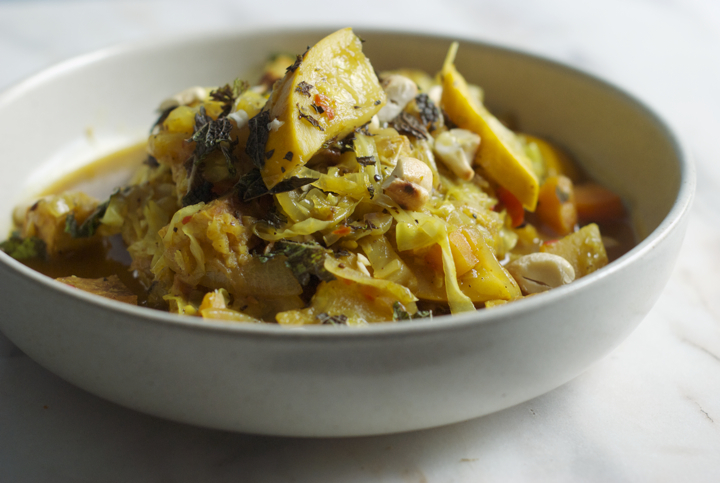
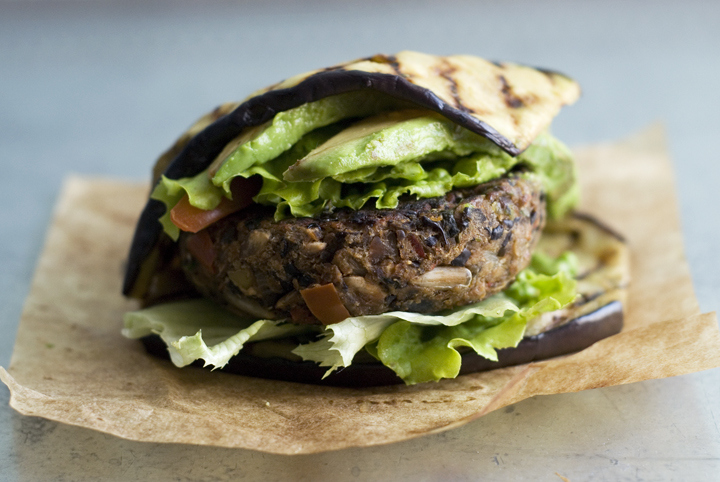


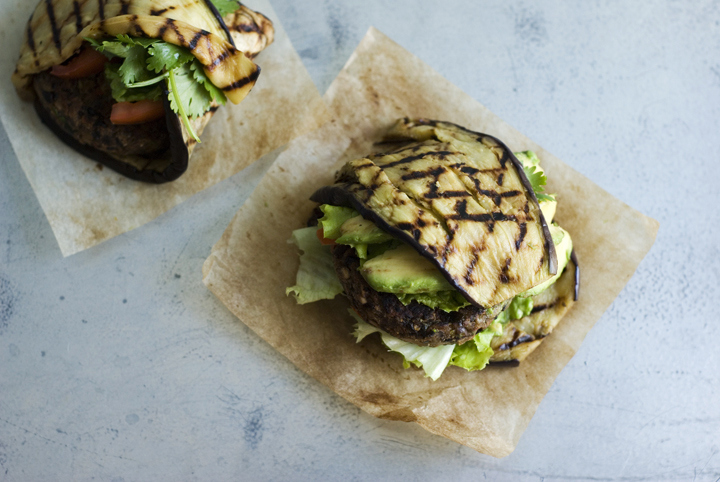

leave a comment